Lika Tourism: Sights You Shouldn’t Miss on Your Way from Zagreb to Split
24 March 2022 - As the Mediterranean sun returns to its full vernal glory, summer is fast approaching, and innkeepers across Croatia are preparing for a busy tourist season. If you happen to be one of the lucky holidaymakers who've got Croatia on this year’s itinerary, pay attention because I want to share with you one of Croatia’s best-kept secrets which you should be sure not to skip on your way from Zagreb to Split.
Located directly in the path of anyone travelling from central Europe to the Dalmatian coast, Lika is a Croatian treasure that is often forgotten. A rugged land nestled in the Dinaric Alps, Lika’s geographic seclusion and small population manifests as both a blessing and a curse, leaving the region relatively untouched by the annual tourism booms that flood neighbouring areas. While this trend has preserved the local authenticity of the towns and villages that dot the valleys, coasts, and mountainsides of Croatia’s largest county, the region has also been denied many of the economic benefits that come with a thriving tourism industry.
So, as the grandchild of a Likan myself, and an avid advocate of Likan culture and natural beauty, I strongly encourage visitors to venture beyond the holy holiday trinity of Zagreb, Istria, and Dalmatia, and consider adding my ancestral lands to at least one leg of your summer adventure. I promise you wont regret it. To make planning a little easier, I have put together a list of destinations you should be sure to check out on your next Croatian getaway, even if only as a pitstop along the way from Split to Zagreb, Vienna, or Venice.
Kuterevo Bear Sanctuary
As Lika is one of Croatia’s most wild regions, it comes as no surprise that a home for orphaned brown bears would find itself at the top of this list. According to the Lika Tourism Board, approximately 800-1000 brown bears live in Croatia. Unfortunately, due to hunting and other human activities, some cubs lose their mothers before they can survive on their own. This is where Kuterevo comes in. Founded in 2002, the volunteer-run rescue center has made it their mission to protect Croatia’s brown bears. As a result of their good deeds, the sanctuary has attracted curious onlookers to the local village, a fortunate side effect for a settlement that was once unknown to the rest of the world. The sanctuary currently hosts 8 bears, 2 of which came from a zoo, while the rest were taken in as cubs from the wild. If you are interested and want to learn more, check out the website of the Lika Tourism Board here.
Memorial Center “Nikola Tesla” Smiljan
As you might be aware, Lika was the birthplace of physicist and engineer Nikola Tesla. Born in Smiljan, Tesla went on to invent the first AC motor and developed AC transmission technology, an achievement that some say changed the course of human history. Come to Smiljan to learn more about the childhood and career of this iconic world figure. The exhibit includes two parts that outline his early upbringing and science-oriented life. Both science nerds and history buffs should be sure to include this pitstop or even spend a few nights in the nearby town of Gospić. Find out more here.
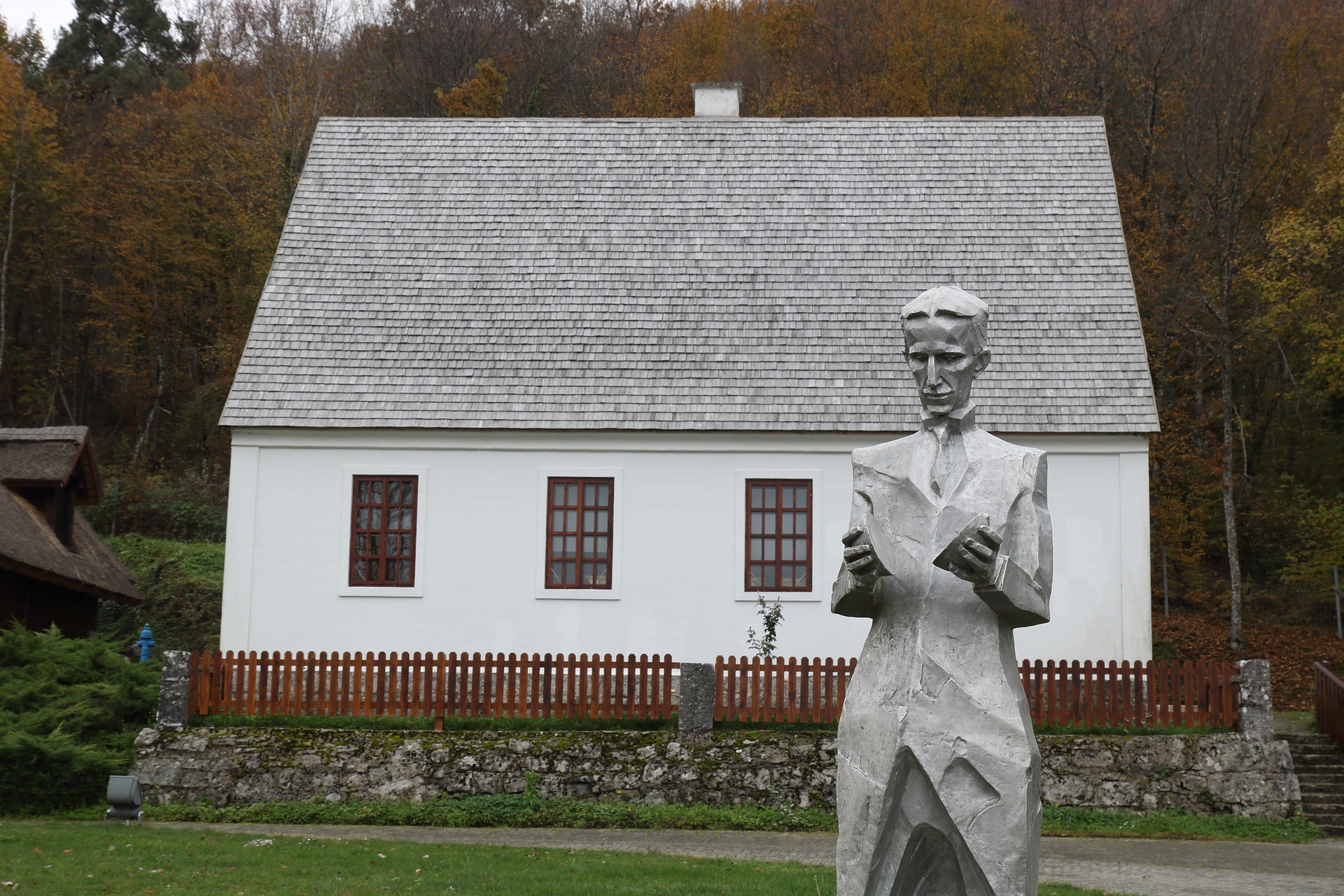
Memorial Center "Nikola Tesla" Smiljan - Pixcell
Plitvice Lakes
Probably the most well-renowned destination that Lika has to offer, Plitviče Lakes National Park is a 295 km2 forest reserve in the northeastern corner of the region. Known for its chain of 16 terraced lakes and waterfalls, this stop will bring out the inner naturalist in even the most well-established city dwellers. The park gained significant international attention in 2014 when a video of Croatian duo 2CELLOS went viral, garnering millions of views on YouTube. Even without the splendour of chordophone melodies, the natural beauty of the lakes speaks for itself, with over a million people visiting the park every year. If you want to avoid crowds, visit outside of the July-August rush. If you find yourself there during in high season, arrive early. The park opens at 7 am, and tour busses generally show up at 9 am. Most importantly, don’t make this the only stop on the Likan leg of your journey. For travellers looking to get off the beaten path, spending some time in at least one of the other options on this list will provide a more authentic and well-rounded experience.
The Croatian Littoral
If you thought Croatian maritime beauty was restricted to Dalmatia and Istria, think again. The equally magnificent Croatian Littoral lies just over the mountain from Lika’s vast woodlands. Travellers who crave the sea but shy away from crowded beaches will find Eden along this exquisite, rugged stretch of coastline. Mainly comprising the areas between Rijeka and Dalmatia, the Littoral hosts several charming seaside towns and villages with mild Mediterranean ambiance, a contrast to the more continental interior. My grandfather would recount tales of the difference in climate between his village and the coastal towns he would visit during his youth. “In my village, cold winters, but over the mountain, hot and… palm trees!” He would exclaim, testifying to the incredible variety his homeland provides.
You, too, can share in witnessing this marvel of geography. Quick day trips to the Littoral are a summer must for anyone staying in Lika. Journey to Zavratnica Bay, where you will find crystal blue waters between the steep cliffs that compose this tranquil inlet. A sunken German WWII ship can also be found here for those just as excited about diving into history as they do the ocean.
The town of Senj may also be of interest to anyone keen to embrace European history while staying dry. Stopover at Nehaj Fortress to marvel at the majesty of the stone walls that have defended the settlement as far back as 1558.
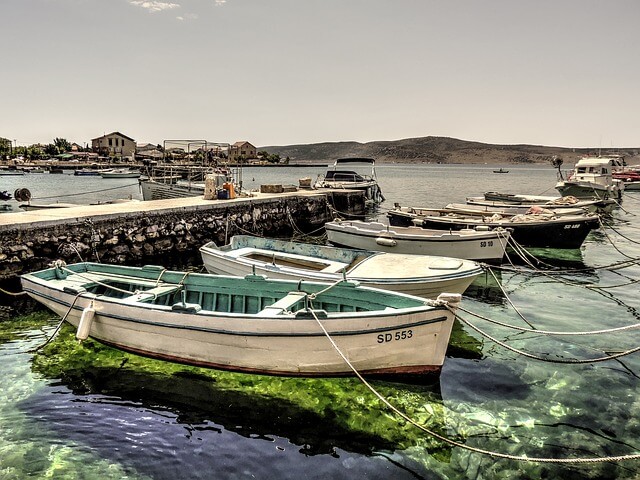
Boats in the Senj harbor - Pixabay
Gospić
The administrative center of Lika, located at the heart of the region, Gospić is an attractive destination for anyone trying to escape big crowds. Despite its modest size, the town is full of the same Southeastern European charm that invites tourists to neighbouring constituencies each year. Existing at the crossroads of empires, Gospić was initially built between two Ottoman forts, later experiencing rule under various other regimes, leaving a unique mark on the town. The proximal location of Gospic to many of Lika’s best tourist attractions makes it an ideal base from which to explore the surrounding area.
For more, check out our lifestyle section.
Can You Name the World’s Smallest Town? (And a Few Other Superlatives in Croatia)
Can you name the smallest town in Croatia (and the world)? What about the biggest, oldest, or safest? Take a guess, and then check out our list of champion towns in six different categories
Did you know that the Croatian language doesn’t distinguish between the terms city and town? We call them both grad, which refers to an urbanized area with more than 10,000 inhabitants. Exceptions are made for less populated settlements if they have significant historical, economic or geographic features.
If there’s one thing we don’t lack around here, it’s places of historical significance, and thus our technical nomenclature goes down the drain. You’ll often see very sparsely populated places being referred to as towns - what’s basically a village in terms of population could have easily had a status of a city in medieval times.
When you think about Croatian cities and towns in terms of superlatives - largest, oldest, safest - none of the leading tourist destinations make the cut. The biggest Croatian cities sure have their appeal, but this time around, we’re looking at a few peculiar title holders among Croatian towns.
Smallest: Hum
This medieval hilltop settlement located in central Istria is not only the smallest town in Croatia, but also referred to as the smallest town in the world.
Its exact population is somewhat debatable: Hum had 30 residents at the time of the 2011 census, but more recent sources place the number closer to 20. We’re curious to see what the 2021 census data will show.
Entirely built in stone, Hum is also minuscule in size, but packs a handful of houses, one restaurant, two churches and a cemetery within its town walls. While it's not technically a town, its history, cultural significance and urban structure make it quite a distinctive settlement.
One of the many Istrian legends has it that the giants who built other central Istrian towns in the valley of the Mirna River used the leftover stone blocks to create Hum as one last masterpiece.
It’s a place worth visiting on a tour of Istria: it’s incredibly picturesque and well preserved, is the last stop of the scenic Glagolitic Alley route, and is also the home of biska, a popular Istrian brandy made of rakija, white mistletoe and several other herbs.
Largest: Gospić
Based on population alone, the winner in this category would definitely be Zagreb - expected and a bit too boring for a list of this kind, so we’ll go for different criteria instead. What’s the biggest town in Croatia based on surface area?
If you’d stick with Zagreb as the answer regardless, you’d be wrong. Surprisingly, the biggest town in Croatia only has a population of about 6,500, but is larger in size than Paris, Berlin or Barcelona.
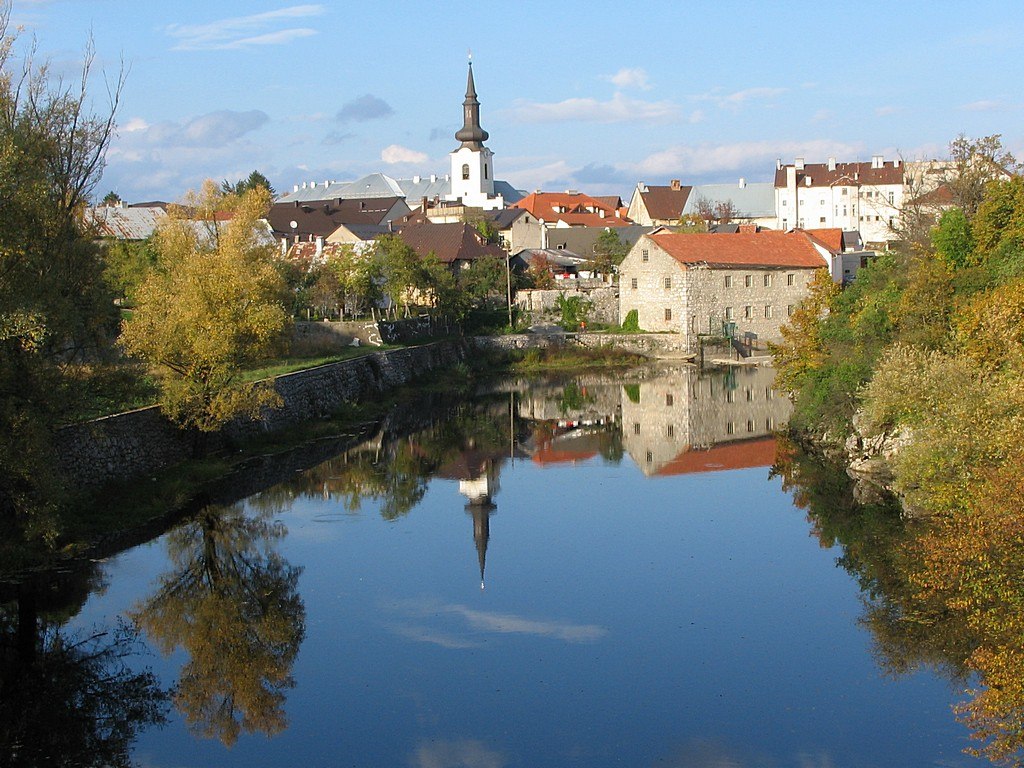
Gospić / iNekic Wikimedia Commons
The biggest town in Croatia is Gospić, with an impressive area of 967 square kilometres. The town itself definitely isn’t that big - it owes its staggering size to some 50 smaller settlements in its wider area that administratively belong to Gospić, as there are no other municipal units nearby to take them under their wing.
Fun fact: Nikola Tesla, the groundbreaking inventor, was born in the nearby village of Smiljan and grew up in Gospić.
Highest: Delnice
Unsurprisingly, we’re heading to a mountainous area to look for an elevation champion. Located in the Gorski kotar region, the town of Delnice sits at an altitude of approximately 700m above the sea level. Its lowest point is situated at an altitude of 210m, and the highest at 1528m!
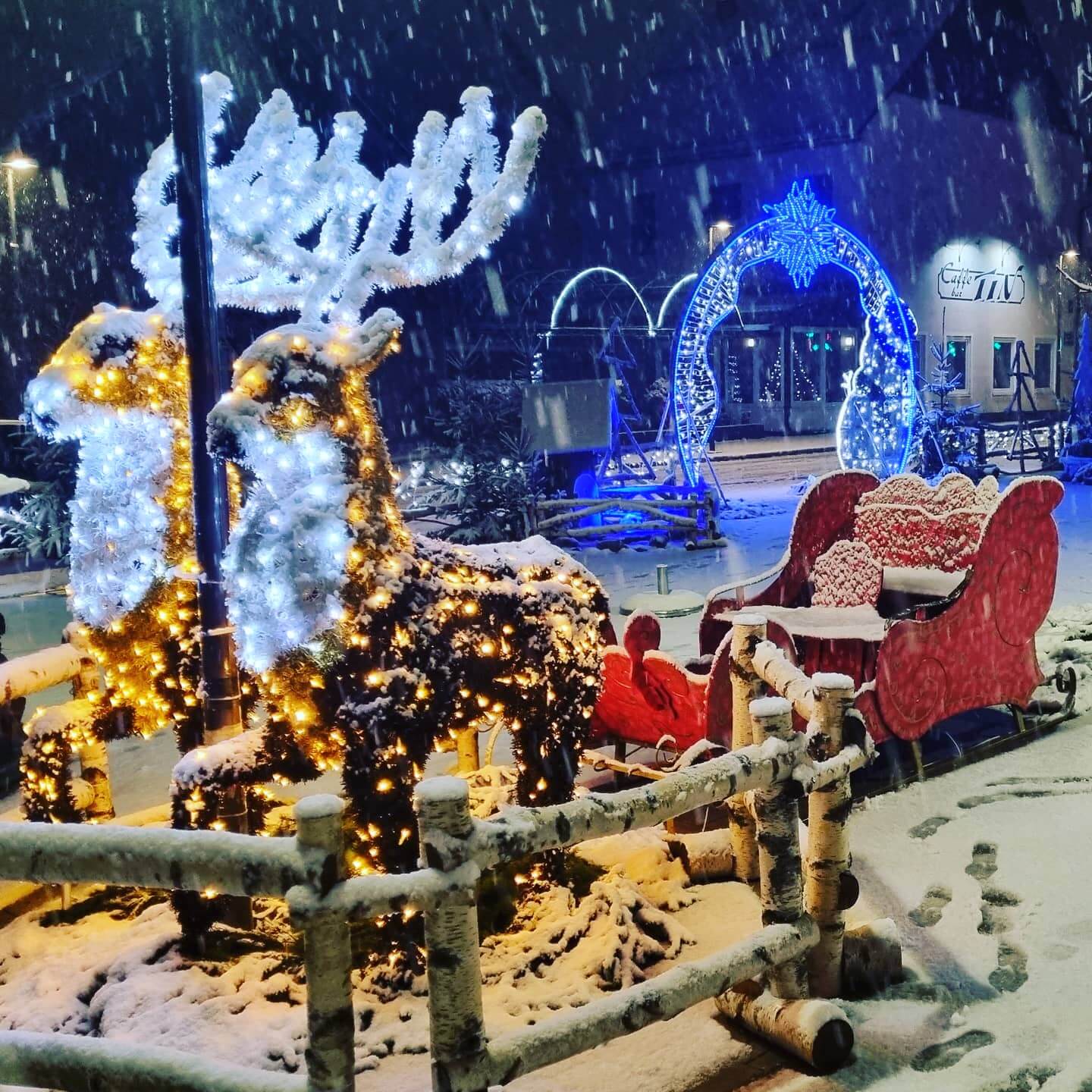
Delnice / Lan Vlad Wikimedia Commons
We’d be remiss not to mention Begovo Razdolje, officially the highest settlement in Croatia at an altitude of 1028m. It’s located in the same region, on the slopes of Bjelolasica mountain, and has a population of 40. While it’s not technically a town, it’s the only inhabited place in Croatia situated at an altitude over 1000m!
Oldest: Vinkovci
In a country that counts an amphitheatre and a Roman emperor’s palace among its cultural monuments, you’d probably look for the oldest settlement somewhere on the coast. And while it’s true that the Adriatic is lined with some of the oldest towns in Croatia, we have to look inland for the oldest of them all.
The town of Vinkovci in Slavonia has been continually inhabited for 8300 years, making it not only the oldest town in Croatia, but Europe as well!
Vinkovci has a lot to be proud of other than its age: it’s the birthplace of two Roman emperors, home to the oldest known calendar in Europe, and hosts the biggest Croatian folklore festival. Check out the 10 things to know about Vinkovci in this dedicated piece.
Youngest: it’s complicated
How to approach the concept of youth when it comes to a town? We can think of three main ways to look at it:
Among the 128 towns and cities in Croatia, Popovača is the one which gained the legal status of a town most recently. It used to be a municipality and was ‘upgraded’ to a town in 2013, effectively becoming the youngest town in Croatia in terms of administrative status.
If we ditch the legal criteria and focus on how long it’s been since the inception of a certain settlement, the youngest town in Croatia is Raša. It’s located in south-eastern Istria and was purposely designed and built as a mining town in the 1930s during Mussolini’s colonization of the region. Two pairs of streets lined with former miners’ houses meet at the central square, where you’ll find the church of St Barbara, uniquely built in the shape of an overturned mining cart.

Raša © Raša Tourist Board
And finally, what about the population? Well, this is a tough one to track down as the demographic situation varies from year to year, and data isn’t always readily available. With apologies to any other town that potentially took over the title at some point, we’ll declare Solin to be the youngest town in Croatia population-wise. Located near Split in Dalmatia, Solin has a population of some 30,000 inhabitants, 6,500 of which are under 18 years of age. The average age in Solin is 34,3 years - well below the Croatian average of 43,6 which ranks us among the oldest populations in all of Europe.
Safest: Sinj
Croatia is widely considered to be a safe country overall. Its population definitely seems to think so: a recent report published by Numbeo and represented on a map by Landgeist shows that Croatia is one of the countries in Europe where people feel safest walking alone at night. It ranks second, after Slovenia - read more here.
What’s the safest place in the second safest-feeling country in Europe, then? For this we turn to actual statistics in an annual report published by the magazine Zaštita and the Faculty of Economics in Zagreb. They rank the 29 biggest Croatian cities and towns according to four separate crime rates (assaults, traffic offences, property crimes and drug abuse).
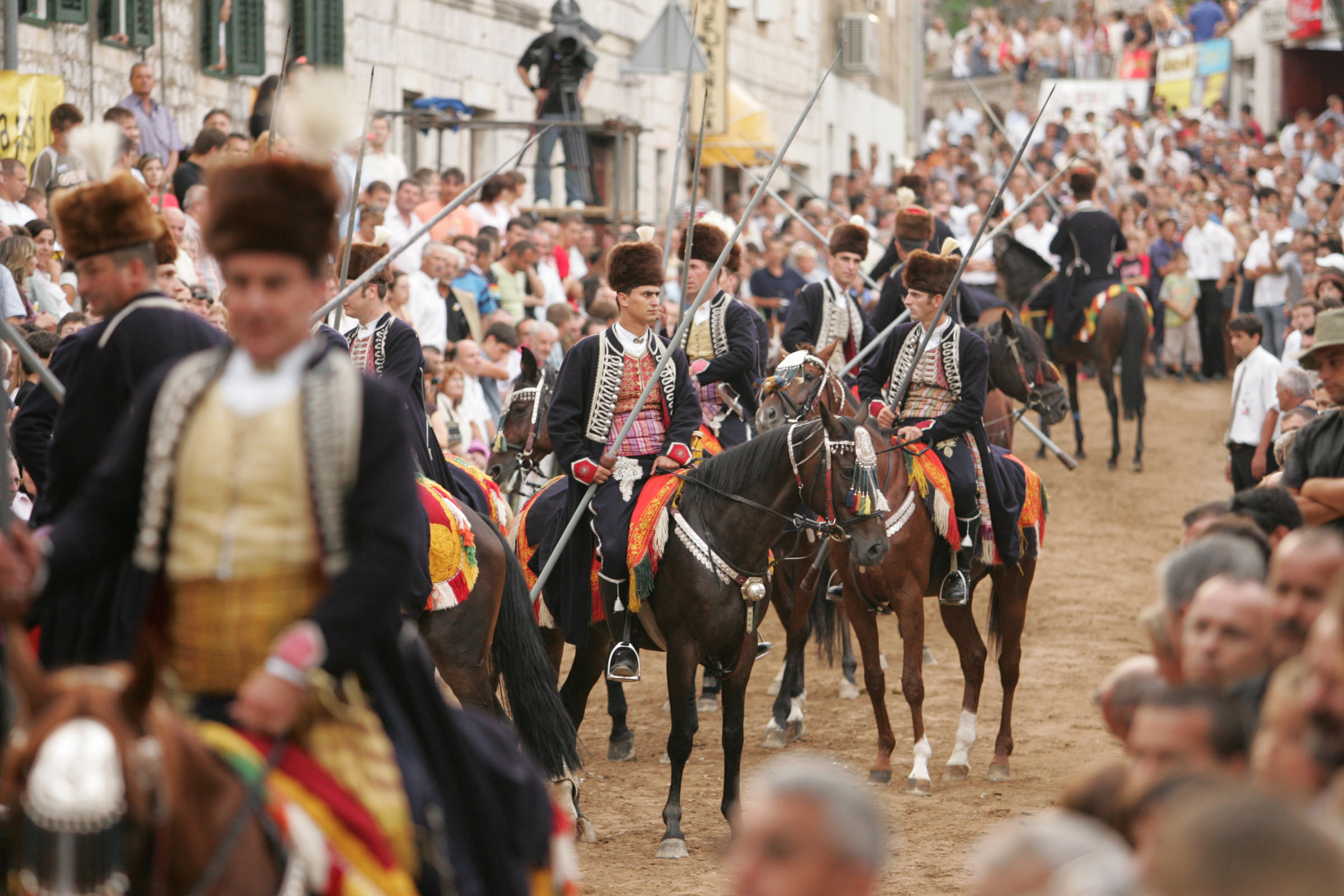
Sinjska Alka © Romulic and Stojcic
The town of Sinj, located in the Dalmatian hinterland, ranked safest in Croatia four times in a row in recent years. It’s a nice title for Sinj and just one of things it’s known for - the most famous certainly being Sinjska Alka.
Inscribed on the UNESCO list of intangible cultural heritage, Sinjska Alka is a traditional knight’s game held every year in August. It commemorates the victory of 700 Croatian soldiers over the army of 60,000 Turkish invaders in 1715 - a report from a reenactment of the battle is available here.
Celebrate Nikola Tesla On His 165th Birthday This Weekend in Gospić
July 6, 2021 - This Saturday marks the 165th anniversary of the birth of the genius born in Smiljan, and the Tourist Board of Gospić, the city of Gospić, and the Nikola Tesla Memorial Center have prepared a worthy event called ''Tesla Power of Lights'' to celebrate Nikola Tesla in style.
Turističke priče reports that as part of the celebration of the 165th anniversary of the birth of Nikola Tesla on July 10th, a lot of content was prepared that will serve as a kind of reminder of the fact that one of the world's greatest geniuses, Nikola Tesla, was born in Lika. On his birthday, this Saturday, as part of the July program in Gospić, the event "Tesla Power of Lights" will be held.
It is a one-day event to celebrate Nikola Tesla, organized by the Tourist Board of the City of Gospić, the City of Gospić, and the Nikola Tesla Memorial Center, and the program will be held in the evening. This year, a light spectacle will be organized in Gospić and its surroundings, and citizens and visitors will be able to enjoy a laser show, among other things. In addition to the extraordinary light effects that will spread the sky over the city, the program of the celebration also includes a multitude of contents on the main city square.
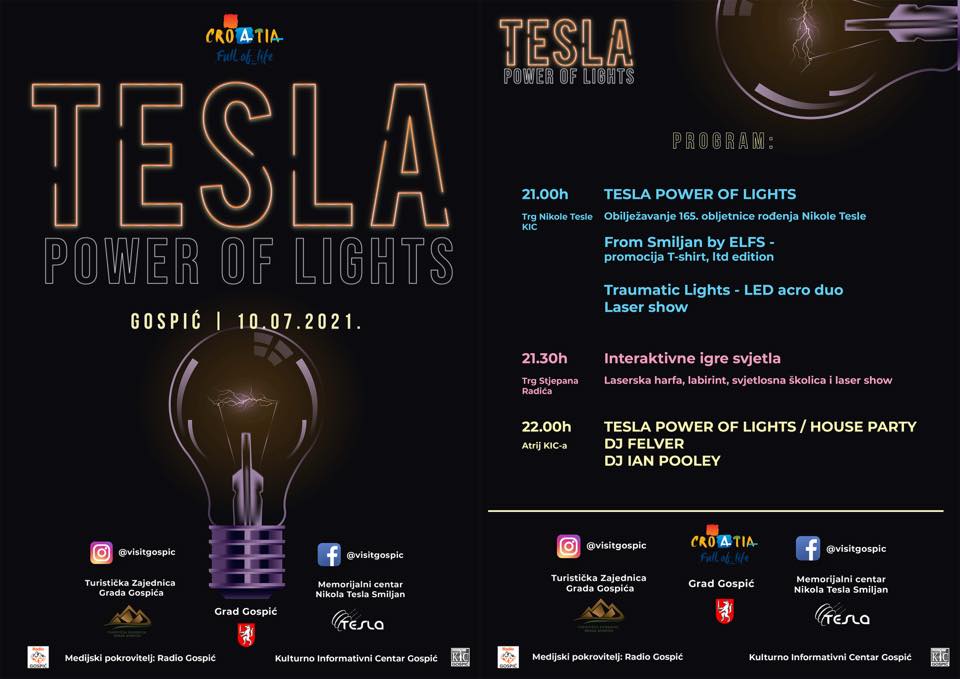
Gospić Tourist Board Facebook Page
Thus, Interactive Games of Light, Laser Harp, Light Labyrinth… will be held on Stjepan Radić Square, and part of the “Tesla Power of Lights” program will also take place on the newly built Nikola Tesla Square. At 9 pm, in the Atrium of the Cultural Information Center Gospić, there will be a promotion of T-shirt From Smiljan by ELFS and Traumatic Lights - Led acro duo, followed by a House party that will start at 10 pm. DJ Felver and DJ Ian Podley will perform.
Under the colored light beams will be buildings related to the life of Nikola Tesla in Gospić, and the Nikola Tesla Memorial Center in Smiljan, which includes the birthplace of the great inventor, physicist, and inventor, will have an Open Day on July 10.
Total Croatia included Nikola Tesla in its guide to Croatian inventions and discoveries, which you can read HERE.
For more news about everything made in Croatia, be sure to follow TCN’s dedicated page.
Croatia and the World Discovering Lika's Potential
June 21, 2021 - Croatia and the world have discovered Lika’s potential in recent years, but what makes it so special? A closer look at Lika's potential.
Located in central Croatia, the Lika region is bordered by the Adriatic coast to the west, Dalmatia in the south, Bosnia-Herzegovina to the east, and Kordun and Gorski Kotar to the north. It encompasses the inland part of Lika-Senj county and the northernmost part of Zadar county. The regional capital is Gospic, a small town located on the east side of Velebit, the mountain range which separates the inland from the Adriatic coast. The physician Nikola Tesla, the 19th-century politician Ante Starčević, the former Austro-Hungarian Generaloberst Stjepan Sarkotić, and the actor Rade Šerbedžija were all born in Lika.
Lika has traditionally been the least developed part of Croatia. In the 1950s and 1960s, during communism, Croatia was industrialized. However, for some reason, Lika was left behind. Then, the 1991-1995 Homeland War happened. During these years, large parts of Lika were completely devastated. Then, in the 2000s, things began to change. The new Zagreb-Split highway (A1) was built through Lika. Suddenly, Lika became a link between Central Europe and Dalmatia. The highway created new jobs and new opportunities. In 2007, the Nacional newspaper reported that 70% of the companies operating in Lika were doing fine. The Croatian average was 69%. In the wake of the 2008-2009 global financial crisis, many Croats had their bank accounts blocked. In 2019, Lika-Senj county had the lowest percentage of blocked accounts. As we speak, a giant hydroelectric dam is being built in Kosinj. Once completed, it will provide the whole region with electricity and, of course, create new jobs.
In recent years, it seems that Croatia and the world have discovered Lika’s potential. Lika is Croatia’s least developed region, but that comes with an advantage - lower taxes and house prices. Lika has a perfect location, 2 hours from Zagreb and Rijeka and only 1 hour from Zadar. The Adriatic coast can be reached within an hour. It’s fully possible to live in Lika, where the house prices are lower, and work in Zadar, Rijeka, or Zagreb, where the wages are higher. In fact, people are already moving from Slavonia, Dalmatia, and Zagreb to Lika! In the near future, a new highway will be built from Otočac to Rijeka via Senj and Crikvenica, over Velebit and along the Adriatic coastline. Once completed, the travel distance to Rijeka will be reduced to less than 2 hours.
The Lika region is probably most known for the Plitvice Lakes. Located in the northern part of the region, the lakes, with their sparkling turquoise water, are interconnected by a series of waterfalls. In 1979, the area became a national park. The surrounding landscape is like a Bavarian postcard - green forests, rolling hills, and white houses with flower-bedecked balconies. The Karlovac-Zadar route, until 2005 the main traffic link between Zagreb and Dalmatia, runs through the area.
As said, the Velebit mountains separate the inland from the Adriatic coast. Since 1999, the northern part of the Velebit mountains has been a national park. Nature is majestic, with high, forest-clad mountains, deep canyons, and crystal clear streams.
Zavizan, the highest meteorological station in Croatia (1676 m), is located within the national park. The Zavizan peak overlooks the Adriatic Sea and the island of Rab. Not far from the national park lies the Alpine village of Krasno, with its Edelweiss Dairy (Sirana Runolist) and its 18th-century pilgrim’s church. Farther east lies Kuterevo, a small village that is known for its brown bears’ sanctuary. The bears are being taken care of by volunteers from all over the world. All these places are located along the road from Otocac to the coastal town of Senj.
As a matter of fact, the Lika region is full of see-worthy places, from the Gacka field and the crystal clear Gacka river in the north and the historic Krbava field (Krbavsko polje) in the south to the Alpine landscape in the west. The landscape is a mix of the Austrian Alps, the American prairies, the Scandinavian black forests, and the green Bavarian hills. The air and the water are clean, and as said, it’s only 30 minutes to the Adriatic coast. If you want to live in a temperate climate but have the subtropical zone next door, Lika is a perfect choice.
For more, follow our travel section.
Croatian Mountain Rescue Service Book Presented by Ivo Pilar Social Research Institute in Gospić
May 16, 2021 - Suitable for the 30th anniversary of one beloved Croatian civil protection organisation, the Croatian Mountain Rescue Service book was presented by the Ivo Pilar Social Research Institute based in Gospic.
With many tourists and visitors (and Croats too), not being too careful when going on ''their little adventures'' up mountains such as the Dinara, Velebit, or elsewhere, the Croatian Mountain Rescue Service (HGSS) is as busy as Batman in Gotham. What with saving people who get lost, being bitten by poisonous animals that live on the mountains, or dealing with people who have hurt themselves in any way, they truly are praised as superheroes and are often the most beloved people on Croatian TV, either in commercials or when the press, telling their heroic tales.
Apart from mountains, their training was also shown to be useful for easing the numerous issues left following the 2020 earthquakes too.
Marking the 30 year anniversary of HGSS's station in Gospić, the Gospić Culture And Information Centre saw the presentation of the book ''The Day Replaced the Night, The Bura Wind Cleared Our View“ (Dan Je Zamijenio Noć, Bura Nam Očistila Pogled), last Friday. As reported by the Ivo Pilar Social Research Institute website, the authors of this pop-science monograph are dr. Ivan Brlic, dr. Nikola Simunic and Dr. Anita Busljeta Tonkovic.
''The Gospic HGSS station, even though with a relatively small member count, operates on the biggest and toughest rescue surfaces in all of the Republic of Croatia. This monograph, through geographical, historical and sociological context, aims to explain how important, but also how difficult the mountain rescuer's job is. The Croatian Mountain Rescue Service book, covering over 150 pages in an honest and interesting way, shows why HGSS is one of the cornerstone operative forces of civil protection and that, in its professional, altruistic, and humane approach, contributes to the overall civil rescue system with the goal of saving human lives,'' they stated from the Ivo Pilar Social Research Institute.
Apart from the authors of the Croatian Mountain Rescue Service book themselves, the event saw HGSS Croatia's main man, Josip Granic, the director of the HGSS Gospic station, Josip Bozicevic, Deputy Interior Minister Damir Trust, as well as the Ivo Pilar Social Research Institute Headmaster, Dr. Zeljko Holjevac sit down and speak. All of them agreed that this book is an important statement of gratefulness to HGSS members for all of the hard work they do.
The book is a product of the Ivo Pilar Institute's successful collaboration with the institutions in Gospic, and the wish for the further and deeper continuation of that cooperation was expressed too. In case of need, HGSS can be reached by calling 112. But, to prevent becoming yet another damsel (or a bachelor) in distress, it's not a bad idea to check their safety guidelines for enjoying the outdoors in Croatia.
Not to far from Gospic is the North Velebit National Park with its glorious mountains, about which you can learn more on our TC page.
For more about the Ivo Pilar Social research Institute in Croatia, follow TCN's dedicated page.
Croatian Tourist Collaboration Between Gospić, Plitvice and Udbina Approved
June 3, 2021 - Taking advantage of the tourist offer at your availability, a Croatian tourist collaboration between Gospić, Plitvice and Udbina has been approved to promote tourism in the country through joint activities between their area.
In order to further contribute to the promotion of Croatian tourism, but also to jointly carry out activities in their areas, the tourist boards of the city of Gospić and the municipalities of Plitvice Lakes and Udbina, received approval to join a Croatian tourist collaboration, reports Turističke Priče. Namely, in order to jointly develop and promote tourist products, tourist communities will act as unique destinations through joint activities.
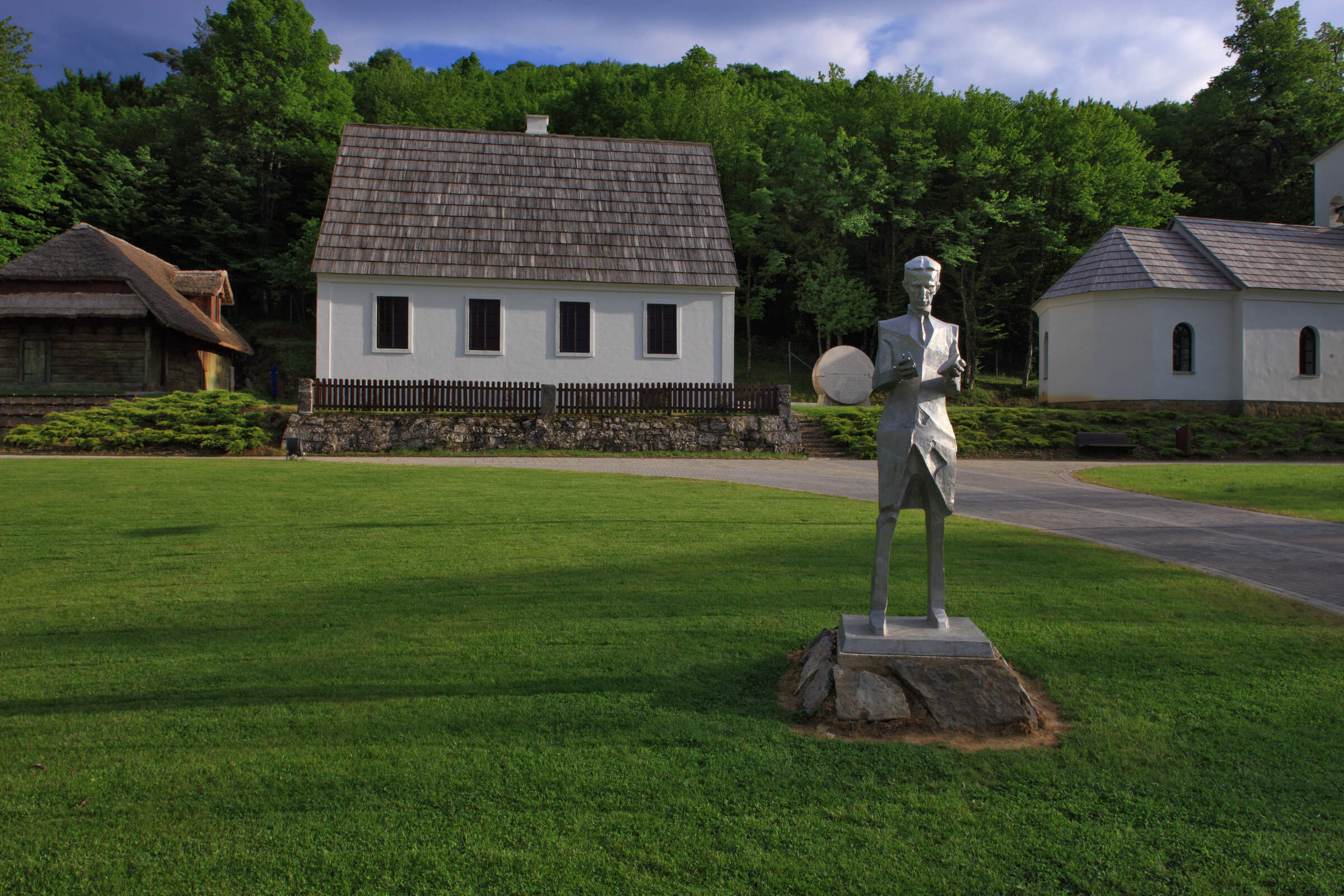
Nikola Tesla Memorial Center, in Smiljan, outside Gospić
This is a story that is not new in Croatia and has proven to be a successful project that contributes to the development of destinations. An additional advantage is that the area of Plitvice Lakes, the town of Gospić, and the municipality of Udbina are located within a radius of 50 kilometers, they touch each other and are located in the same, Unit of Regional Self-Government, Lika-Senj County.
Plitvice Lakes National Park has a world natural pearl and a large number of tourists who can complete their stay in the National Park by visiting the town of Gospić, which is the center of the county, and choose one of many additional sports, tourism, adrenaline or cultural activities.
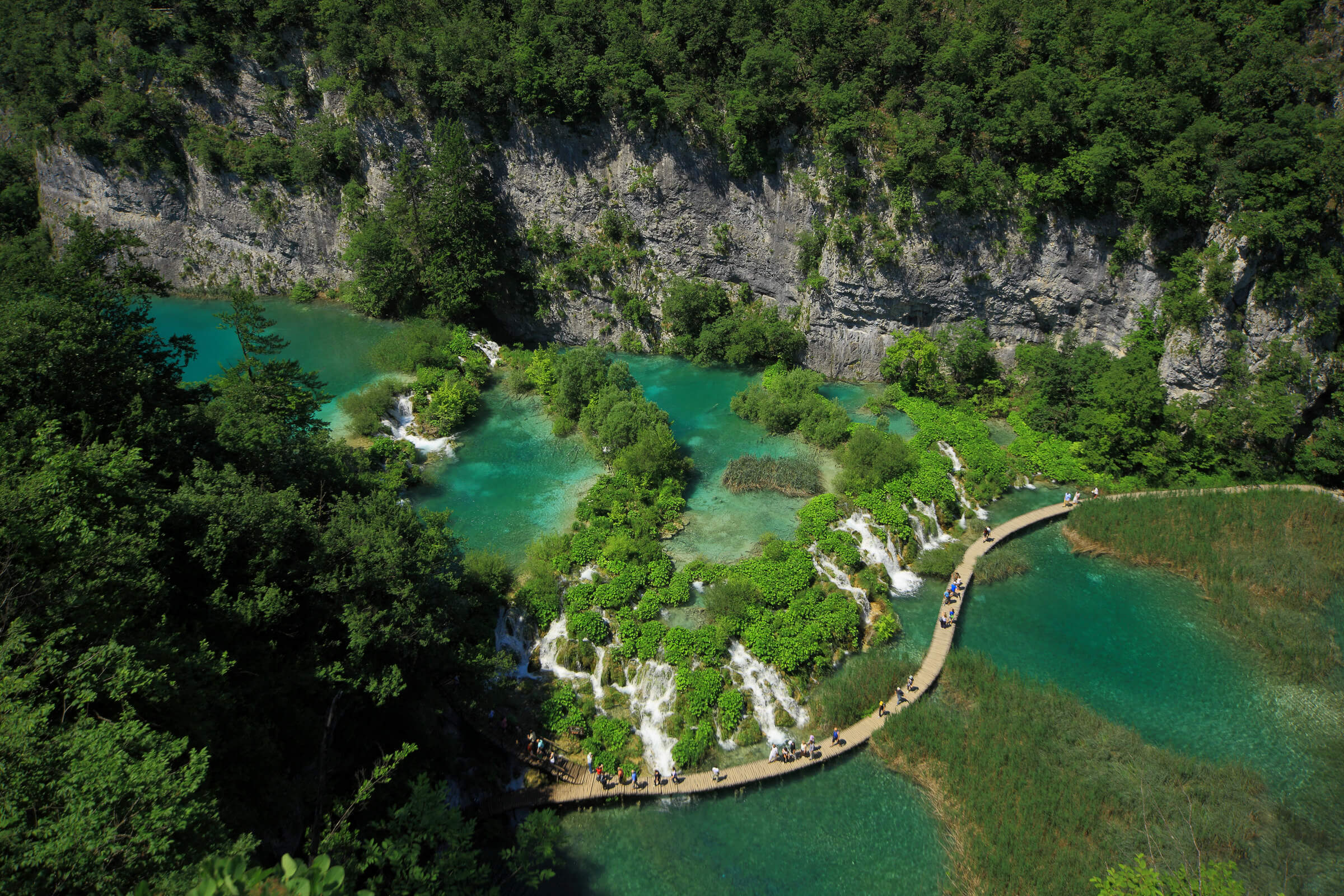
Plitvice Lakes (Photo: Mario Romulić)
The lack of promotion of the historically known and significant area of the Republic of Croatia, the municipality of Udbina, or medieval Krbava, would change with this project and the destination would get a historically and religiously significant role than it has so far. Udbina with its position, historical and cultural significance, religious tourism and natural features, and well-known eco production can greatly contribute to the development of a common tourist destination in the marketing activities ahead, complete the tourist offer, and to the satisfaction of tourists visiting us.
The Croatian tourist collaboration between the three tourist boards will be able to work better on the development of the tourist product and promotional activities of Lika as a character and define the tourist brand of the destination or micro-region as a whole.

Udbina (Photo: Lika Tourist Board website)
The development of a diverse offer and the generation of demand is a prerequisite for year-round tourism, which tourist boards strive for and which must ensure stability and a much more significant impact of tourism on the entire economy. Through year-round tourism, moving away from seasonality, and offering a quality and recognizable product throughout the year, you can conjure up everything that rural destinations have to offer. The aim is to provide visitors with useful and interesting information about the tourist offer of the destination and to show the attractiveness of the destination. In this way, new visitors will be attracted and the destination will be positioned on the tourist market while building the image of the destination as safe, which offers a diverse offer, and keeping this recognizability as a permanent trademark.
Tourist boards are facing the definition of potential future resources, product inventory, and programs for developing the Outdoor offer.
For more on what to do and how to get to Plitvice, check out our dedicated Total Croatia page HERE. Also, visit our 2021 guide on all Croatian National and Natural Parks HERE. Both now in your language!
Follow the latest on flights to Croatia HERE and the latest travel updates and COVID-19 news from Croatia HERE.
For more on travel in Croatia, follow TCN's dedicated page.
Former PPK Velebit Gospic Industrial Centre to Return to Life
March the 3rd, 2021 - The former PPK Velebit Gospic industrial centre has has new life breathed into it in the economic sense thanks to two dedicated Croatian companies.
As Poslovni Dnevnik writes, the former industrial complex of the former PPK Velebit Gospic, which is characterised by its large and imposing silos and warehouses, has been left empty and decaying for decades, while potential investors who do happen to have come and gone all gave up on starting any sort of production within the facility.
Today, that unfortunate picture is changing for the better and the production plant has started being used by two Croatian companies which deal with different activities, which have created new jobs in production with the aim of further expansion. These are Plastruktor and Komarna, and they have invested money and time to put the situation in the neglected PPK Velebit Gospic complex into some sort of order.
All the carpentry on the silo was changed, the premises were cleaned, the area around it was properly arranged and the storage areas were put back into operation after a very long time. The owners of the company Plastruktor, Josip and Monika Sincek from Varazdin, have been delving into entrepreneurial waters for about twenty years now. Their company currently employs twelve workers and by the end of the investment cycle, that number should increase to thirty employees. The company´s main business segment relates to the production of windshields and noise barriers, as well as the creation of mobile homes from recycled materials, for which the Sincek couple won a gold medal in the category, a special award from the fair organisers and the Grand Prix of the European Association of Innovators. Their first mobile home was recently delivered from Gospic to Petrinja, as a donation for a family left without accommodation following the devastating earthquake in December 2020.
In addition to this investment in the second part of the complex, along Bilajska street, an entrepreneur from Split, the owner of the company Komarna, Sandro Babic is investing in a plant for the production of tortillas, which should come to life in the period ahead of us. All works are proceeding according to the expected dynamics, and according to the owners, the first tortillas produced in the former PPK Velebit Gospic complex will soon be on Croatian store shelves.
The Mayor of Gospic, Karlo Starcevic, and the Deputy Mayor, Kristina Prsa, as well as their associates, all visited the plant, and the enterprise owners bringing it back to life expressed their joint satisfaction with the current cooperation with the mayor and the professional services undetaken by the Gospic and its local administration, which was made available to them at all times.
With the launch of these two projects, the former PPK Velebit Gospic complex will be operational again after a full thirty years, and if all plans are realised, the people of Gospic could soon get new catering and tourist facilities at the top of the silo, which will surely be an attraction.
This is an example of a very good practice of attracting investors, and in Gospic, according to Mayor Starcevic, new jobs will be created in production when both plants are fully operational and this will be the direction that Gospic will be heading in in the future, and as Starcevic points out, job creation in production is the only sustainable way of ensuring Croatian demographic renewal.
For the latest travel info, bookmark our main travel info article, which is updated daily.
Read the Croatian Travel Update in your language - now available in 24 languages.
Retired Bishop Mile Bogovic Dies from COVID-19
ZAGREB, Dec 20, 2020 - Bishop Mile Bogovic of Gospic-Senj died at the age of 81 on Saturday from the consequences of COVID-19, 16 days after the onset of symptoms, the Gospic-Senj Diocese said.
Msgr Bogovic was born in 1939 in Cerovac near Slunj in Karlovac County. He was ordained a priest of the Rijeka-Senj Archdiocese on 29 June 1964 and retired in 2016.
By dividing the territory of the Rijeka-Senj Archdiocese on 25 May 2000, Pope John Paul II established a new diocese with its seat in Gospic, appointing Msgr Mile Bogovic the first bishop of the new Gospic-Senj Diocese.
Tesla and Us – TAU: Gospić to Organize International Camp for Youth
November 13, 2020 - Tesla and Us – TAU will be held in Gospić next August for young people interested in entrepreneurship and technology innovation.
The city of Gospić will organize an international camp for young people interested in entrepreneurship and technology innovation. The city of Gospić and Association Enterprising signed a contract on October 5 in the Technical Museum Nikola Tesla to organize an international educative project by a bequest from Nikola Tesla, one of the greatest minds in human history.
The camp will be held in August 2021 under the name “Tesla and Us – TAU”. The camp will be intended primarily for smaller children and for children in primary and secondary schools. University students are also welcome to join to broaden their knowledge not only in the STEM field but also in various aspects of entrepreneurship.
The project found support and is encouraged by many partners: Zagreb University of Applied Sciences, European Business School Zagreb, European Franchise Institute, First Technical School of Zagreb Tesla and Private secondary school of economics Katarina Zrinski have all come together to support the camp.
Gospić is proud of the international collaboration and describes the project as an educational project, whose goal is to encourage and support young scientists and entrepreneurs to develop their potential even further. Gospić decided to engage in the whole process of supporting young people with groundbreaking ideas since the prominent and renowned scientist Nikola Tesla was born in Smiljan, a small village near Gospić in the mountainous region of Lika, and since Tesla spent his first years of education exactly in Gospić.
To read more about lifestyle in Croatia, follow TCN's dedicated page.
Joso Mraovic, One of the HDZ Founders, Died of Coronavirus
November 10, 2020 – Joso Mraovic, known as one of the founders of the HDZ in Lika, who was also called "Lički Tuđman", died yesterday in the Rijeka hospital from coronavirus.
According to Maxportal, because he was infected with the coronavirus a few days ago, he was admitted to the Rijeka Clinical Hospital, where he was on the respirator, and passed away on Monday afternoon. He had underlying heart and blood pressure problems.
The news of his death was published by the Gospić HDZ.
"Today is a particularly sad day for the two Mraović families, the family of the late Joso and the late Mile. Today is a sad day for all the founders of HDZ and the Croatian state, today is a sad day for all Croatian defenders of Gospić and Bilaj. Unexpectedly, two true patriots left us, two falcons who participated in all important processes from the very beginning of the creation of the Croatian state.
Dear Mraović families, we are proud that we participated with Joso and Mile in the creation of our only homeland, and we hereby express our sincere condolences on behalf of all HDZ founders from the town of Gospić. Joso and Mile will be with us and in our hearts forever," reads the post on their Facebook page.
The news was confirmed for 24sata by the Lika-Senj County Prefect Darko Milinović, who knew Mraović.
The controversial politician and businessman died at the age of 68, and apart from the founding of the HDZ, he was also known to the Croatian public for the affair of raping American Ilisha Jarrett, a former Gospić basketball player. For that case, known publicly as the „ličko rukovanje“ („Lika handshake“), he was sentenced to two years in prison in 2005.
As Jutarnji list reports, the case then attracted a lot of attention, especially because of the reasoning of the verdict of Gospić judge Branko Milanović, who acquitted Mraović in the first trial. Namely, to the dismay of the public, he stated that forcible pushing of a finger into the anus should not be understood as rape and that it is actually identical to shaking hands, which is why the term "ličko rukovanje" ("Lika handshake") was later coined.
However, the Supreme Court overturned that verdict and returned the case to the court in Rijeka, where Mraović was sentenced to three years in prison for lewd acts identical to rape. The Supreme Court reduced his sentence to two years, and he was eventually released from prison four months earlier, in 2011.
Mraović was expelled from the HDZ in 2001, and two years ago, there was talk of his return to the party, even though this was not possible after he was convicted of a crime.
The nickname "Lički Tuđman" ("Lika's Tuđman") was given to him in his homeland because of his distinctive political appearance and influence, and the whole of Lika knew him by that nickname. He was a member of the Gospić City Council and the Lika-Senj County Assembly. He was renowned as a wealthy and powerful man.
To read more news from Croatia, follow TCN's dedicated page.


